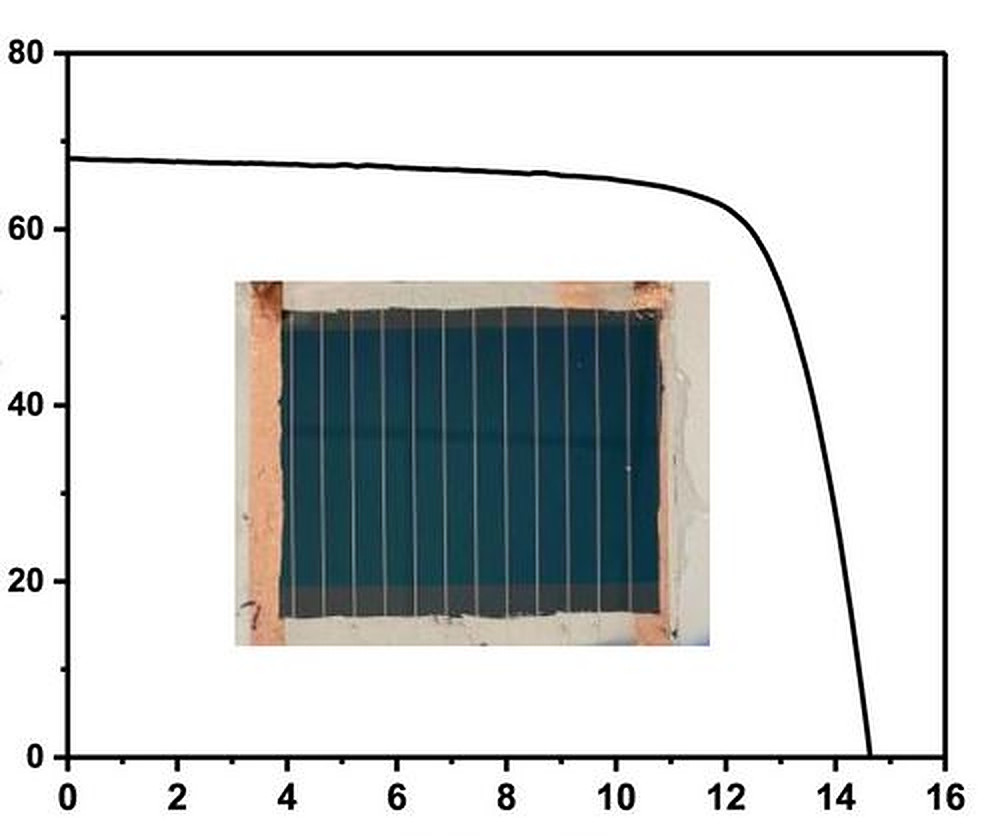From pv magazine Global
Researchers led by the University of North Carolina at Chapel Hill have fabricated a large-area perovskite-silicon tandem solar cell. They claim iz can achieve a steady-state power conversion efficiency of 25.1%.
They said they tried to overcome shunting, which is a typical issue when scaling up perovskite solar technologies from small-area cells to large-area devices. “Shunts” in PV cells create alternate pathways for a solar-generated charge, leading to power losses. Reduced shunt resistance is associated with multiple forms of module degradation and failure, including hotspots and potential-induced degradation.
The scientists built the 24 cm2 tandem cell with a lithium fluoride (LF) interlayer placed at the interface between a hole transport layer (HTL) made of poly-triarylamine (PTAA) and a wide bandgap (WBG) perovskite absorber. This interlayer is the key element that reportedly improves physical contact at the buried interface and mitigates shunting. The deposited the PTAA and WBG perovskite layers through blade coating.
“Sub-optimal interface contact with substantial voids could act as shunting pathways,” the scientists said. “A LiF interlayer was found to avoid the formation of interfacial voids, which is one possible reason for the reduced shunting of etched tandems with a LiF interlayer.”
The researchers deposited the other layers of the tandem cell by sputtering, thermal evaporation, and atomic layer deposition (ALD). They also tested three different configurations of bottom cells.
Tested under standard illumination conditions, the 24 cm2 tandem cell showed an efficiency of 25.2%, an open-circuit voltage of 1.89 V, a short-circuit current density of 18.1 mA/cm2 and a fill factor of 0.736.
“This is, to the best of our knowledge, one of the most efficient two-terminal tandem devices reported in the literature with areas of over 10 cm2,” the researchers said.
They introduced the tandem cell technology in “Shunt mitigation toward efficient large-area perovskite-silicon tandem solar cells,” which was recently published in Cell Reports Physical Science.
“The strategy developed here is valuable for developing efficient, reproducible, and large-scale perovskite-silicon tandems,” the scientists said.
This content is protected by copyright and may not be reused. If you want to cooperate with us and would like to reuse some of our content, please contact: editors@pv-magazine.com.









By submitting this form you agree to pv magazine using your data for the purposes of publishing your comment.
Your personal data will only be disclosed or otherwise transmitted to third parties for the purposes of spam filtering or if this is necessary for technical maintenance of the website. Any other transfer to third parties will not take place unless this is justified on the basis of applicable data protection regulations or if pv magazine is legally obliged to do so.
You may revoke this consent at any time with effect for the future, in which case your personal data will be deleted immediately. Otherwise, your data will be deleted if pv magazine has processed your request or the purpose of data storage is fulfilled.
Further information on data privacy can be found in our Data Protection Policy.